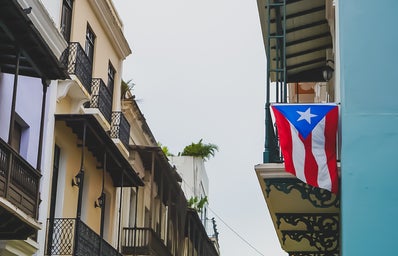Puerto Rico is a beautiful island that measures 100×35, and even though our little piece of land is so small, the talent of the people who live here is immense. For the entire month of March, we highlight women more than at other times of the year, their hard work, their sacrifices, and various achievements. It is a month in which many begin to meet the pioneers of our “Isla del Encanto.” So to begin, I will be highlighting some Puerto Rican writers who built and maintained our culture, with legacies that still endure, even to this day.
- Mariana Bibiana Benitez
-
Retrieved from Ecured
Born on December 10, 1783, Maria Bibiana Benitez, better known as the first Puerto Rican female poet, was born in the town of Aguadilla. She wrote the poem “La Ninfa de Puerto Rico” which is considered to be the first poem written by a Puerto Rican woman. In addition, she was also the first woman to write a dramatic work thanks to her writing La Cruz del Morro, which is based on the attack on the city of San Juan in 1625. It is also considered the first dramatic work written in all of Puerto Rico that was about a local and historical event.
- Julia De burgos
-
Retrieved from Poetry foundation
Julia Constancia Burgos García, better known as Julia de Burgos, was born in Carolina on February 17, 1914. On May 24, 1933, she obtained a certificate from UPR to work as an elementary teacher. But it was not until 21 years later that she was inspired to write her most famous poem “Rio Grande de Loiza.” Giving way to four years later, her first collection of poems, Poemas exactos a mi misma was published. In this book, her intense lyricism and subjective mode were shown. In 1938, she published Poema en veinte surcos followed a year later by Canción de la verdad sencilla. Both books gave her recognition as one of the most outstanding contemporary poets of not only Puerto Rico, but also of the Spanish Caribbean. Winning awards such as the Puerto Rican Literary Award for her second collection of poems in 1940, and an Honorary Doctorate from the University of Puerto Rico in 1987.
Her work explored issues pertinent and important to Puerto Ricans such as the island’s colonial past, the legacy of slavery, and United States imperialism. Not to mention that many consider her “a woman ahead of her time” since her talents, dedication and passion for what she did marked a before and after in Puerto Rican literature. Burgos is also recognized and celebrated with her own day of commemoration. According to an obituary published by the New York Times, she was “a poet who helped shape Puerto Rican identity.”
- mayra santos febres
-
Retrieved from Zenda
Mayra Santos-Febres is a poet, novelist, essayist, and a university professor. Born on February 26, 1966, she is an anti-racism activist as well as a defender of just causes and the marginalized and rejected of society. These convictions come to light in each and every one of her literary works. In her writings, she vindicates the sexual and personal freedom of women, the rights of the homosexual and black communities, and the essence of Puerto Rico as a Caribbean and Antillean.
She is one of the few Puerto Rican writers of today that have achieved great national and international presence. Several of her works have been translated into French, English, German, Croatian, Korean, Icelandic, and Italian. In addition to the courses and seminars that she has taught and teaches in her role as professor, she has been invited to international summits where she has been a participant and a winner.
Some of her awards have been Letras de Oro and the Juan Rulfo Internacional, both in the short story genre, and she was a finalist for the Premio Primavera 2017 for her work Nuestra Señora de la Noche. In 2010, she received the United Nations Medal of Culture and was selected as one of the 100 most influential Ibero-Americans by the Spanish newspaper El País.
She currently directs the Academic Diversification in African Descent and Racialization Project at the University of Puerto Rico.
- rosario ferré
-
Retrieved from Pinterest
Rosario Ferré was born in Ponce on September 28, 1938. She published her first story in 1970 and, from that moment on, she’s become one of the most relevant women writers representing Puerto Rico, as well as one of the strongest female voices of the 20th century. Her works cover topics such as the culture and politics of Puerto Rico, feminist movements in PR and the US, and also her personal relationships.
She began to fully stand out as a writer with her story, Papeles de Pandora, published in 1976. Along with her most notable children’s story, El Medio Pollito, published in 1978, her book Maldito amor should also be highlighted as it is considered one of her most complete works. Ferré was a professor at the University of Puerto Rico and a visiting professor at Rutgers University and Johns Hopkins University. In 1974, she won the Ateneo Puertorriqueño short story contest; in addition to receiving an honorary doctorate from Brown University. Not to mention that she founded the magazine Zona de Carga y Diseño with Olga Nolla.
- angelamaria dávila
-
Retrieved from Dialogoupr
To conclude, I would like to make a small honorable mention of Angelamaria Davila who was born on February 21, 1944 in Humacao. Although she was considered by national literary critics as one of the most promising exponents of Puerto Rican poetry of her generation, she died on July 8, 2003 at the age of 59.
Defending national feminine and racial affirmation, she published two collections of poems during her lifetime. The first with her then husband, José Maria Lima, called Homenaje al Ombligo in 1966 and the second called Animal Tender and Fiero, published in 1977. After her death, her last collection of poems, La querencia, was published in 2006 thanks to the Institute of Puerto Rican Culture.
These great women, writers, poets, and representatives of beautiful Puerto Rican literature are excellent examples of those who should be taken as references when being inspired to create art that impacts, just as they did with their legacy.


